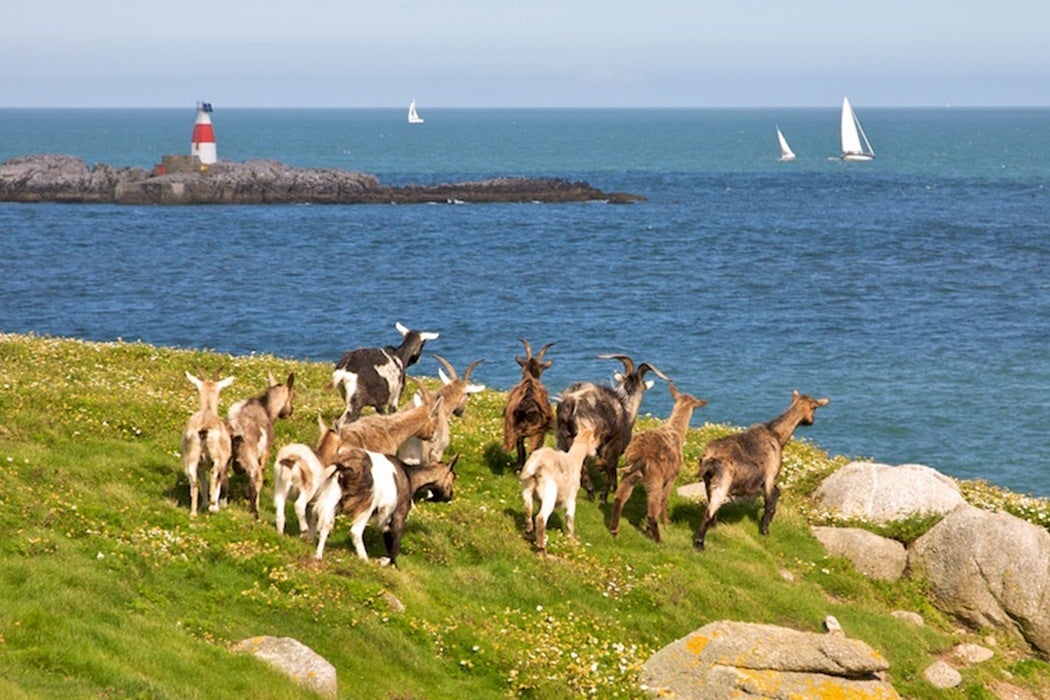On several previous occasions here in
Wavescan, we have presented a series of topics on the progressive development of
wireless and radio on the island of Guam in the western Pacific. Currently,
Guam is the focus of world attention, due to aggressive threats that have been
made against the island by the country of North Korea on the Asian mainland.
Many months ago, we began this
lengthy series of topics on the radio scene on the island of Guam, and our
first topic was the story of their first longwave wireless station, a navy
wireless station that was inaugurated in 1906 under the informal callsign UK. That
callsign, UK, was subsequently regularized to NPN. During this consecutive series of historic
topics, we have presented the story of many wireless and radio stations on
Guam, including the two Gospel shortwave stations, Adventist World Radio KSDA
and Trans World Radio KTWR.
On this occasion, here in Wavescan, we
return to the radio scene on the island of Guam for episode number 16. Today’s story is presented under the title:
The Radio Scene on the Island of Goats.
Actually, there are several islands in various places
around the world that have been given the name Island of Goats or Goat
Island. Back during the era of European
exploration across the wide oceans upon planet Earth, there were several
occasions when a few goats (or sheep or pigs) were dropped off on a small
island somewhere so that they could multiply and serve as a food source for
subsequent explorers traversing the same wide spread ocean expanses.
Apparently Cabras Island on the edge
of Guam was one such location where a Spanish galleon dropped off a few goats, a
few hundred years ago. The Spanish word for Goat is Cabra.
Cabras Island in the Central
Pacific, the Island of Goats, is a small low island at the end of a narrow reef
causeway that extends from the central west coast of the larger island
Guam. The causeway and the small island
form the northern arm of Apra Harbor, a location that the Japanese armies
defended vigorously around the middle of the year 1944.
Early in the following year (1945),
the Americans began work on the installation of a Coast Guard radio station on
Guam’s Cabras Island. The electronic
equipment was installed in a small corner of what was called an Elephant
Quonset Hut, a large semi-circular steel two storied prefabricated hut.
Coast Guard radio station NRV was
soon taken into regular service with a staff of just four operators. Station NRV was in use for communication with
local shipping, and with the small Chain of American LORAN navigation stations
in the western Pacific.
Some 18 years later, Coast Guard
Radio NRV was enlarged and upgraded, with new electronic equipment, though
still at the same location in the Elephant Quonset Hut. Around this same era, there was a major
earthquake off the coast of Japan, with the threat of a tsunami along the coast
of Guam. The communication radio station
NRV was temporarily abandoned due to its low lying location, though subsequent
information demonstrated that this had not been necessary.
Two years later (1965), the NRV
Coast Guard communication station was transferred from Cabras Island into ground level rooms in
Building 150 in the Naval Communication Station NPN at Finegayan. This new location for NRV was very close to the cave that the
famous American escapee George Tweed survived in during the era of Japanese
occupation.
The
transmitters in use for station NRV were part of the naval transmitter complex
at Barrigada, and usually NRV communicated in Morse Code on shortwave via one
of the 1 kW AN/FRT-70 transmitters.
There was a buried cable running from Building 150 to Building 112, and
then a microwave relay carried the electronic signals to the navy transmitter
station.
Ten years later again (1975), Coast
Guard NRV was moved upstairs in the same Building 150 at Naval Base
Communications. The receiver equipment
was also installed in this same Building 150.
However, give almost two more
decades (1994), and the operation of Coast Guard Radio NRV on Guam was
transferred and remotely controlled from Coast Guard NMO in Hawaii and also
from NMC at Point Reyes in California.
The use of Morse Code was finally dropped during the next year, on April
1, 1995.
However, current information
available on the internet indicates that callsign NRV is still in use on Guam
to this day. Station NRV is still available
for communication in the usual way by aircraft and shipping coming and going in
the Guam area. We might add that Coast
Guard Radio NRV on Guam readily verified listener reception reports in the
past.
On the next occasion when we visit
the radio scene on Guam in the western Pacific, we plan to present information
about the NORAD navigation radio station which was installed on another nearby
small island, known as Cocos Island.
(AWR Wavescan 447)